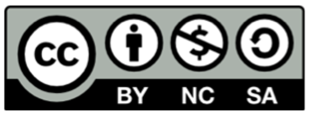Freedom and Normativity in the Ascent of Mount Carmel
DOI:
https://doi.org/10.24310/Metyper.2018.v0i19.4839Keywords:
Freedom, liberation, law, appetites.Abstract
The present work tries to articulate the relations, apparently conflicting, between the freedom of the person and the normativity that is imposed from another instance, that is, the will of God, in the form of commandments that must be obeyed. These relationships will be analyzed in the work of St. John of the Cross Mount Carmel, which stands out among other works of the holy doctor for his asceticism and peculiar rudeness. It is my intention to put to the consideration of the current reader a nuance of underlying liberation, which crosses Sanjuanist doctrine and gives meaning to the radicalism it proposes. This radicality is none other than the Gospel, after all, that of the narrow door that leads to the freedom of the children of God. The action of Love will be, precisely, to grant us - through a game of loving / painful seduction of successive “nights” - that true freedom for which the efforts of one’s own will are not enough.
Downloads
Metrics
References
RODRÍGUEZ, J. V., “La Liberación en San Juan de la Cruz”, Ephemerides Carmeliticae, XXXVI, Roma, 1985.
HERRÁIZ, M., “Introducción general” a San Juan de la Cruz, Obras Completas, Salamanca, Sígueme, 1992.
RUIZ SALVADOR, F.: Místico y maestro, San Juan de la Cruz, Madrid, Editorial de Espiritualidad, 1986.
HERRÁIZ, M., “Introducción a Subida del Monte Carmelo”, San Juan de la Cruz, Obras Completas,
DE HARO IGLESIAS, M. F., Subida del Monte Carmelo, apuntes inéditos, p. 14 y ss.
Federico Ruiz: Místico y Maestro. San Juan de la Cruz, Editorial de Espiritualidad, Madrid, 1986, pp. 107-108.
STEIN, E., La ciencia de la cruz, Ediciones Monte Carmelo, Burgos 2002.
Downloads
Published
How to Cite
Issue
Section
License
Authors who have publications with this journal agree to the following terms:
a. Authors retain their copyright and grant the journal the right of first publication of their work, which is simultaneously subject to the Creative Commons Attribution License that allows third parties to share the work provided that its author and first publication in this journal are indicated.
b. Authors may adopt other non-exclusive licensing arrangements for distribution of the published version of the work (e.g. depositing it in an institutional telematic archive or publishing it in a monographic volume) provided that initial publication in this journal is indicated.
c. Authors are allowed and encouraged to disseminate their work via the Internet (e.g. in institutional telematics archives or on their website) before and during the submission process, which can lead to interesting exchanges and increase citations of the published work (see The Open Access Effect).






17.png)

